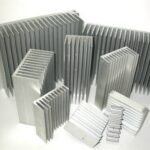Working principle of fluorescent lamp
Fluorescent lighting has a great advantage over other light sources in any application. The tubes can be obtained in a verity of lengths. With illumination in a variety of colors. It is possible to active quite high lighting intensities without excessive temperature rise and owing to the nature of light sources, the danger of galore is minimized. The efficiency of an equivalent tungsten lamp is about 40 lumens per watt, about three times the efficiency of an equivalent filament lamp.
The fluorescent lamps consist of a glass. The inside surface of the table is coated with a layer of fluorescent material in the form of a power. The coating materials used depend upon the color effect desired and max consist of zinc silicate, cadmium, silicate, cadmium silicate or calcium tang state.
The organic chemicals are known as phosphorus which transforms shortwave invisible radiation into visible light. The lamp contains a small quantity of argon gas at a pressure of 2.5 mm of mercury and one or two drops of mercury. It is provided with two electrodes coated with electron emissive material.
A starting switched is provided in the circuit, which pats the electrodes directly across the supply mains at the time of starting, so electrodes may get negated and exit sufficient electrons. A stabilizing choke is connected in series with it, which acts as a bat last in running condition and provides a voltage impulse for staring. A capacitor is connected across the circuit to improve the power factor.
Application
Major applications of this type of lamp are for high way and general outdoor lighting where color discrimination is not required, a sum as street lighting, parks, rail yards, storage yards etc.


